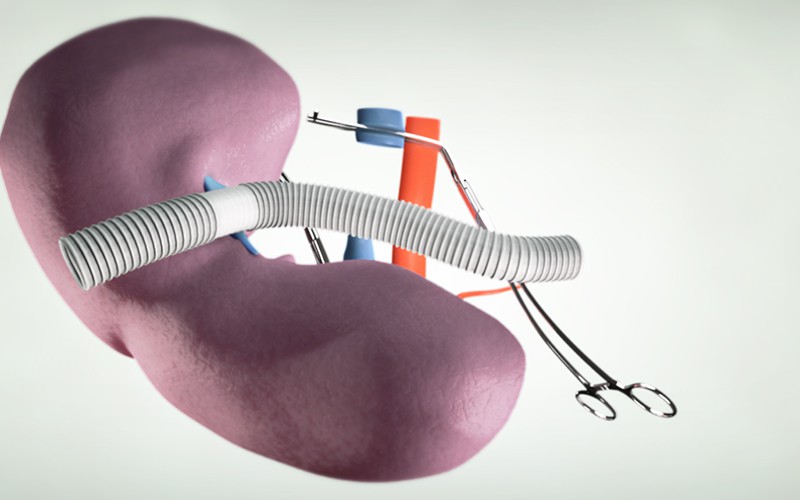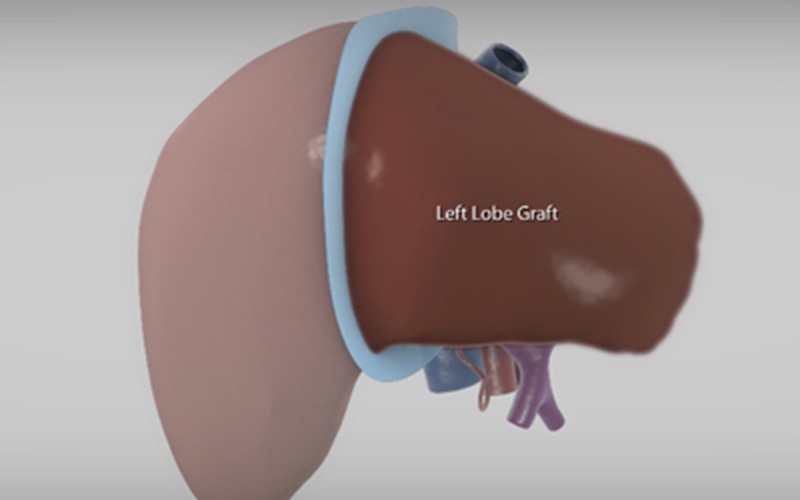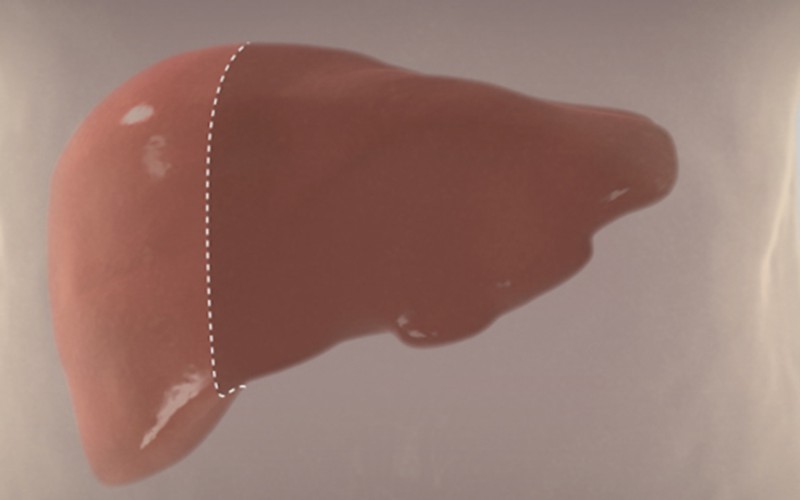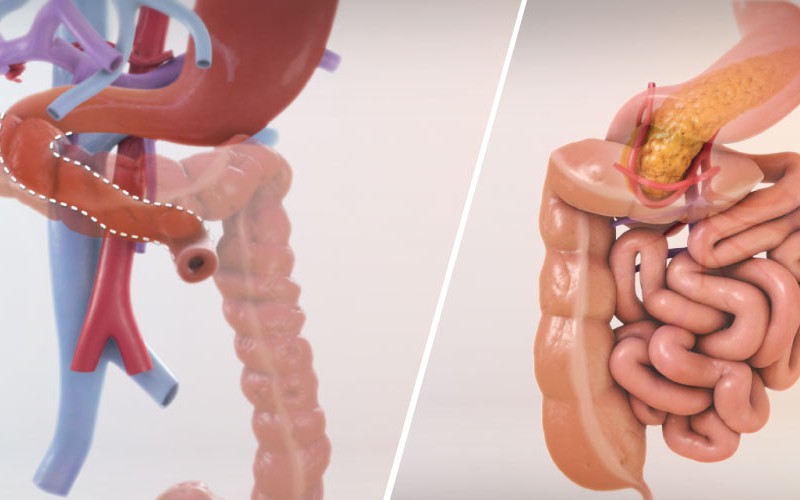Piggy-back liver transplantation
With SMV jump graft
00:12 SURGICAL PLANNING
02:52 PREPARATION OF DECEASED LIVER GRAFT
06:14 DIVIDING VESSELS AND DUCTS
08:08 SMV JUMP GRAFT RECONSTRUCTION
10:29 PORTAL DISSECTION OF RECIPIENT LIVER
12:03 IMPLANTATION OF DONOR LIVER: PIGGY-BACK TECHNIQUE FOR CAVAL ANASTOMOSIS
14:43 IMPLANTATION OF DONOR LIVER: HA AND BILE DUCT ANASTOMOSIS
Case description
- The patient was a 62-year-old female with hepatitis C cirrhosis and portal vein thrombosis. Collateral vessels and splenomegaly were present.
- The surgical plan was to perform a “piggyback” liver transplant - a liver transplantation technique with preservation of the recipient vena cava. This technique avoids venovenous bypass and complications associated with it. It also reduces overall time of the surgery since there is no need for inferior caval anastomosis.
- A replaced right hepatic artery was found in the donor graft. It was reconstructed by anastomosis to the distal GDA stump.
- After back bench preparation of the donor graft, the recipient's liver was mobilized from the cava and removed after dividing the left hepatic artery, right hepatic artery, bile duct, portal vein, right hepatic artery, and middle-left hepatic artery.
- Due to portal vein thrombosis in the recipient, a SMV jump graft was anastomosed to recipient's SMV. The jump graft was then connected to the donor portal vein.
- The reconstructed donor hepatic artery was anastomosed to the recipient’s common hepatic artery. This was followed by the bile duct anastomosis.
CT scans (recipient pre-op)
Click to turn annotations on/off
CT scans (recipient post-op)
Click to turn annotations on/off




